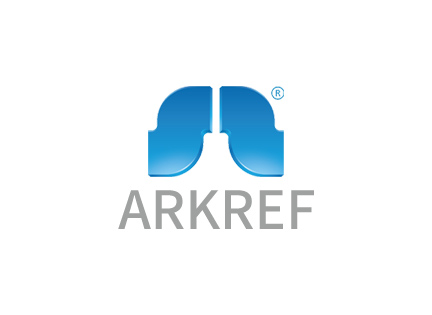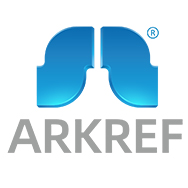Cold room basics and how they keep things fresh
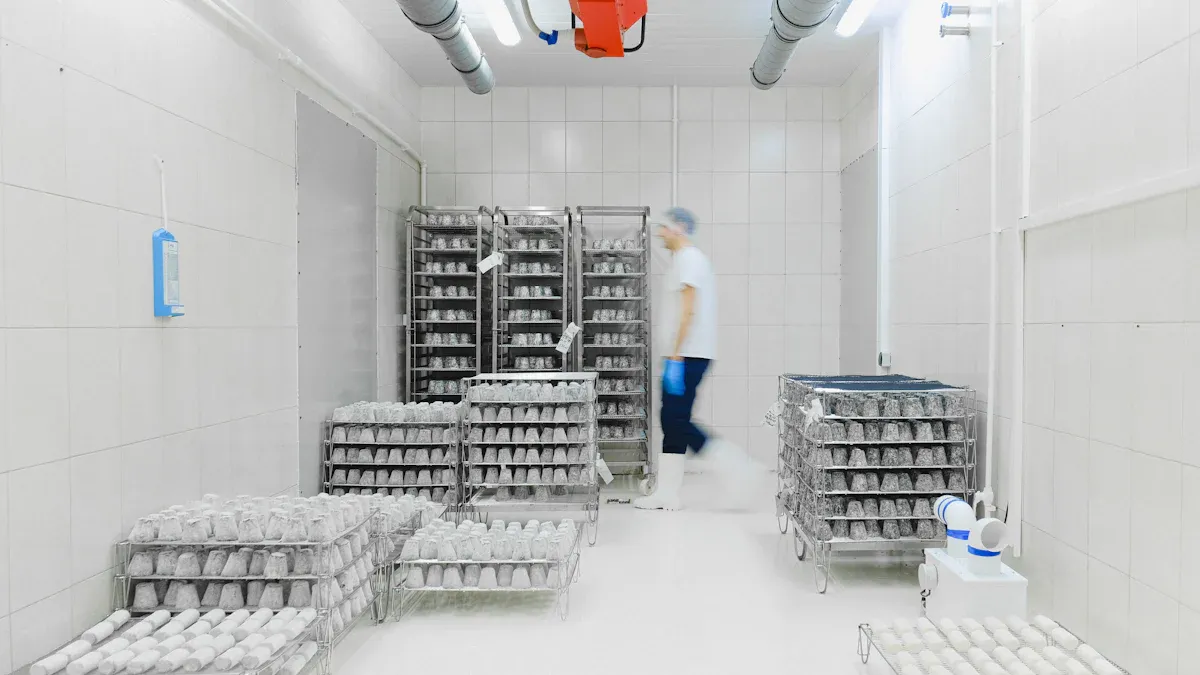
A cold room is a special place to keep things cool and fresh. You use a room with controlled temperature to protect items like fruits, vegetables, and medicines from going bad. The right temperature makes food spoil slower and helps you throw away less.
Fresh produce stays crunchy and lasts more days.
Medicines and vaccines stay safe and work well.
You waste less food because cooling makes it last longer.
With good cooling, you keep your favorite foods and important medicines in good shape.
Key Takeaways
Cold rooms help keep food and medicine fresh. They do this by controlling temperature and humidity. This stops things from going bad and being wasted.
Using a cold room can help save money. It makes fruits, vegetables, and medicines last longer. Less waste means you save more money.
You should check the temperature and humidity in a cold room often. This helps make sure things stay safe and work well.
Cold rooms are very important in many businesses. Food and medicine companies use them to keep things safe and good quality.
Smart technology in cold rooms lets people watch them all the time. It helps find and fix temperature problems fast.
What is a cold room?
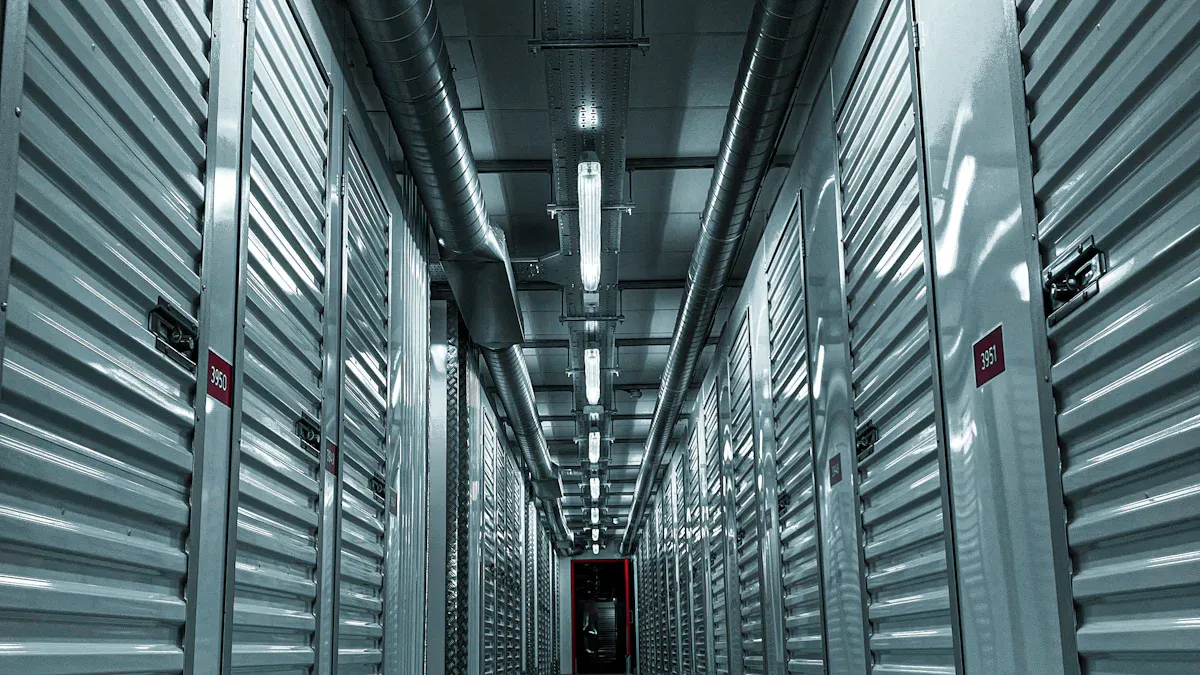
Definition
You might wonder what a cold room is. A cold room is a large, walk-in space that keeps things cool. You can think of it as a giant refrigerator. People use cold rooms to store items that need low temperatures. You step inside and feel the chill right away. The walls, floor, and ceiling have thick insulation. This insulation helps keep the cold air inside. You find cold rooms in grocery stores, restaurants, and hospitals.
Tip: If you ever visit a supermarket, you may notice a cold room behind the scenes. Workers use it to keep fruits and vegetables fresh before they reach the shelves.
Purpose
You use a cold room to protect items from spoiling. Food, medicine, and even flowers stay fresh longer in a cold room. When you keep things at the right temperature, bacteria and mold grow slower. This means you waste less and save money. Cold rooms help you store large amounts of food safely. You also keep vaccines and medicines working well because they need cool temperatures.
Here is a simple table showing what you can store in a cold room and why it matters:
| Item | Why Store in a Cold Room --- | Benefit --- | | Fruits | Stay crisp and tasty --- | Less waste --- | | Vegetables | Keep nutrients --- | Longer shelf life --- | | Medicines | Remain effective --- | Safe for use --- | | Dairy | Prevent spoilage --- | Fresh taste --- |
You rely on cold rooms every day, even if you do not see them. They help you enjoy fresh food and safe medicine.
How a cold room works
Cooling process
You may wonder how a cold room stays so cold. It uses several important parts that work together. The compressor pushes refrigerant gas through the system. This gas is under high pressure and gets very hot. The condenser cools the gas and turns it into a liquid. It does this by letting heat escape outside the room. The expansion valve controls how much liquid goes to the next part. The evaporator lets the liquid take in heat from the air inside. When the refrigerant turns back into a gas, it removes heat from the room. This makes the air inside much cooler.
Here is a table that explains what each part does:
Component | Function |
|---|---|
Pumps refrigerant gas to high pressure and temperature. | |
Condenser | Cools and condenses refrigerant from gas to liquid by releasing heat to the outside. |
Expansion Valve | Regulates the flow of refrigerant liquid at the proper rate. |
Evaporator | Absorbs heat from indoor air as the refrigerant evaporates, cooling the room. |
Fans blow cold air around the room. This helps every spot stay at the right temperature. You can keep fruits, vegetables, meat, or medicine cool everywhere in the room.
Temperature control
It is important to keep the temperature steady. Special sensors and controls watch the temperature all the time. These systems keep the temperature very close to the set number. If the temperature changes, the system fixes it right away. This stops food from spoiling and keeps medicine safe.
Modern cold rooms use smart technology to help with this. You might see wireless sensors and data loggers. They send information about temperature and humidity in real time. Automation helps you handle goods better and makes fewer mistakes.
Note: If the temperature changes too much, you can lose products. Food can spoil, medicine can go bad, and people can get hurt if things are not steady.
Here is a table showing the best temperature ranges for different products:
Product Type | Temperature Range |
|---|---|
Fruits and Vegetables | 0°C to +10°C |
Meat and Fish | -18°C to -25°C |
Rapid Preservation | -25°C to -35°C |
You can also see which storage types fit certain products:
Storage Type | Temperature Range | Products Suitable |
|---|---|---|
Low-temperature | -18°C and below | Frozen foods like meat, seafood, and ice cream |
Medium-temperature | 0–8°C | Fresh produce, dairy, and ready-to-eat products |
Ultra-low temperature | -40°C or below | Vaccines, biological samples, and research materials |
When you keep the temperature steady, you protect everything inside. This careful control saves money and stops waste.
Cold room components
When you walk into a cold room, you see many parts. These parts work together to keep things fresh. Each one helps make the room safe for storage.
Insulation panels
Insulation panels make up the walls, ceiling, and floor. They keep cold air inside and stop heat from coming in. Most panels use high-density foam. This foam keeps the room cold and saves energy. Picking the right insulation helps your cold room work better. It also lowers your energy bills.
Here is a table that lists types of insulation panels and what they do:
| Insulation Panel Type --- | Thermal Resistance Value (R-Value) --- | Fire Resistance --- | | EPS OSB SIPs --- | Low --- | Class B --- | | SEPS OSB SIPs --- | Moderate --- | Class B --- | | XPS OSB SIPs --- | High --- | Class B --- | | PUR/PIR SIPs --- | Excellent --- | Class B --- |
High-density foam boards are good at keeping out heat and water. You can look at the chart below to compare insulation types:
| Insulation Type --- | Pros --- | Cons --- | Typical R-value --- | Cost Range --- | | Foam Board (High-Density) --- | Keeps heat out, blocks water and bugs --- | Hard to use in odd shapes, costs more, needs sealed seams --- | R-3.8 to R-6.8 per inch --- | $0.25-$2 per board foot --- | | Polyiso --- | Best R-value --- | --- | --- | --- | | Extruded Polystyrene --- | Blocks water --- | --- | --- | --- | | Expanded Polystyrene --- | Cheapest option --- | --- | --- | --- |
Tip: To keep your cold room cold, pick panels with high R-values. These panels help keep the cold in and the heat out.
Refrigeration unit
The refrigeration unit is like the heart of the cold room. It has compressors, condensers, evaporators, and fans. The compressor moves refrigerant through pipes. The condenser lets heat out of the room. The evaporator takes heat from the air inside. Fans blow cold air everywhere. When all these parts work together, your food and medicine stay cool.
You need a strong refrigeration unit to keep the room cold. If one part breaks, the whole system may not work well.
Controls and monitoring
Modern cold rooms use smart controls and sensors. You set the temperature, and sensors check it all the time. If the temperature changes, alarms go off right away. Real-time monitoring helps you find problems fast. Predictive maintenance lets you fix things before they break. Backup power keeps the cold room running if the power goes out.
Here is a table with features and what they do:
| Feature --- | Benefit --- | | Real-time monitoring --- | Finds temperature changes fast, keeps things safe --- | | Predictive maintenance --- | Fewer breakdowns, works better --- | | Advanced alarm systems --- | Fix problems quickly --- | | Backup power supplies --- | Cold room works during power loss --- | | Standardized protocols --- | Easy to connect and get good data --- | | AI-driven analytics --- | Smarter control and better safety --- |
Note: Smart controls help protect your products and save money. They keep food fresh and medicine safe, even if something goes wrong.
All these parts work together to make a safe, cool place. You need insulation, refrigeration, and controls to keep your cold room working well.
How cold rooms keep things fresh
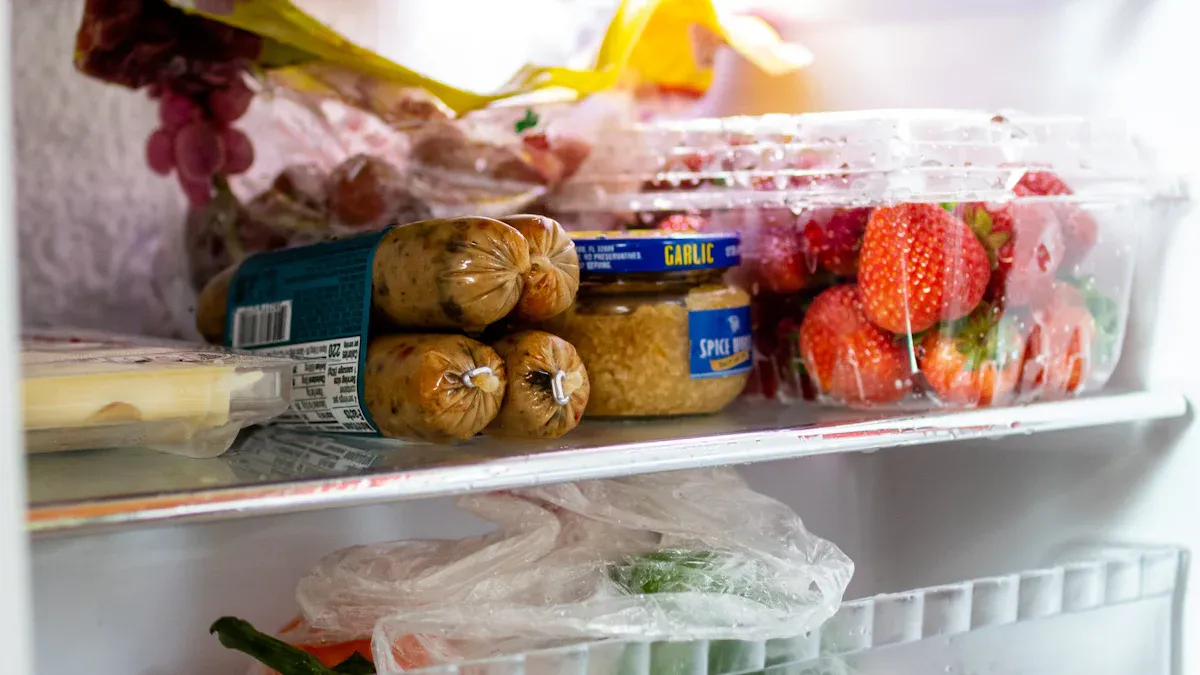
Temperature and humidity
You need to control both temperature and humidity to keep things fresh in a cold room. When you set the right temperature, you slow down the growth of bacteria and mold. Most fruits and vegetables stay crisp and tasty at temperatures between 32°F and 50°F. Meat and fish need colder settings, often below freezing. You can use sensors to check the temperature every minute. If the temperature goes up, you risk losing freshness.
Humidity also matters. If the air is too dry, some foods lose moisture and become shriveled. If the air is too wet, mold can grow faster. You can use humidifiers or dehumidifiers to adjust the air inside the cold room. Many cold rooms have special controls that let you set the humidity level for each type of product.
Here is a simple table showing how temperature and humidity affect different items:
| Product --- | Best Temperature --- | Best Humidity --- | | Apples --- | 32°F to 40°F --- | 90% --- | | Cheese --- | 35°F to 45°F --- | 85% --- | | Leafy Greens --- | 32°F to 36°F --- | 95% --- |
Tip: You should check the settings often. This helps you keep food fresh and safe for longer.
Preventing spoilage
You can prevent spoilage by using a cold room with steady temperature and humidity. When you keep food cold, you slow down chemical changes and stop bacteria from growing quickly. You also protect medicines and vaccines from losing their power. If you store flowers, you keep them bright and healthy for more days.
Here are some ways you can stop spoilage:
Store items at the right temperature.
Use clean shelves and containers.
Check for signs of mold or rot.
Rotate stock so older items get used first.
Keep the cold room door closed as much as possible.
If you follow these steps, you waste less and save money. You also keep your family and customers safe.
A cold room gives you a safe place to store many products. You can trust it to keep things fresh and ready to use.
Cool room uses
Food storage
You need a cool room to keep food safe and fresh. When you put fruits, vegetables, dairy, and meat in a cool room, they last longer. The cold slows down spoilage and stops bad bacteria from growing. Grocery stores, restaurants, and food factories use cool rooms every day. These rooms help follow health rules and keep people safe.
A cool room does more than just make food cold. It helps you follow food safety laws by letting only certain people inside. It also keeps records of how food is stored. You can see how a cool room helps food safety in this table:
Evidence Type | Description |
|---|---|
Temperature Control | Cool rooms keep food at safe temperatures to stop spoilage and contamination. |
Access Control | Only trained staff enter, which keeps hygiene high and meets regulations. |
Audit Compliance | Entry records help you prove you follow strict food safety rules. |
Tip: Always check the temperature in your cool room. This keeps food safe and helps your business follow health codes.
Pharmaceuticals and chemicals
You also use a cool room to store medicines, vaccines, and chemicals. Many of these need the right temperature to stay safe and work well. If they get too hot or too cold, they might not work or could be unsafe.
A cool room keeps the temperature steady and has good monitoring. This stops sudden changes that can ruin products. You also follow strict rules for storing these items. The table below shows what different products need:
Temperature Range | Typical Products | Storage Equipment | Key Considerations |
|---|---|---|---|
2°C to 8°C | Vaccines, Insulin | Medical refrigerators | Watch temperature, avoid spikes |
-20°C to -40°C | Some vaccines, Hormones | Ultra-low freezers | Use backup power, alarms |
-40°C to -80°C | Cell samples, Biologics | Ultra-low freezers, Nitrogen | Strict checks, insulated containers |
-80°C to -196°C | Cryopreserved samples | Liquid nitrogen storage | Special handling, safety steps |
Ambient controlled | Clinical trial materials | Temp-controlled rooms | Regular checks, compliance |
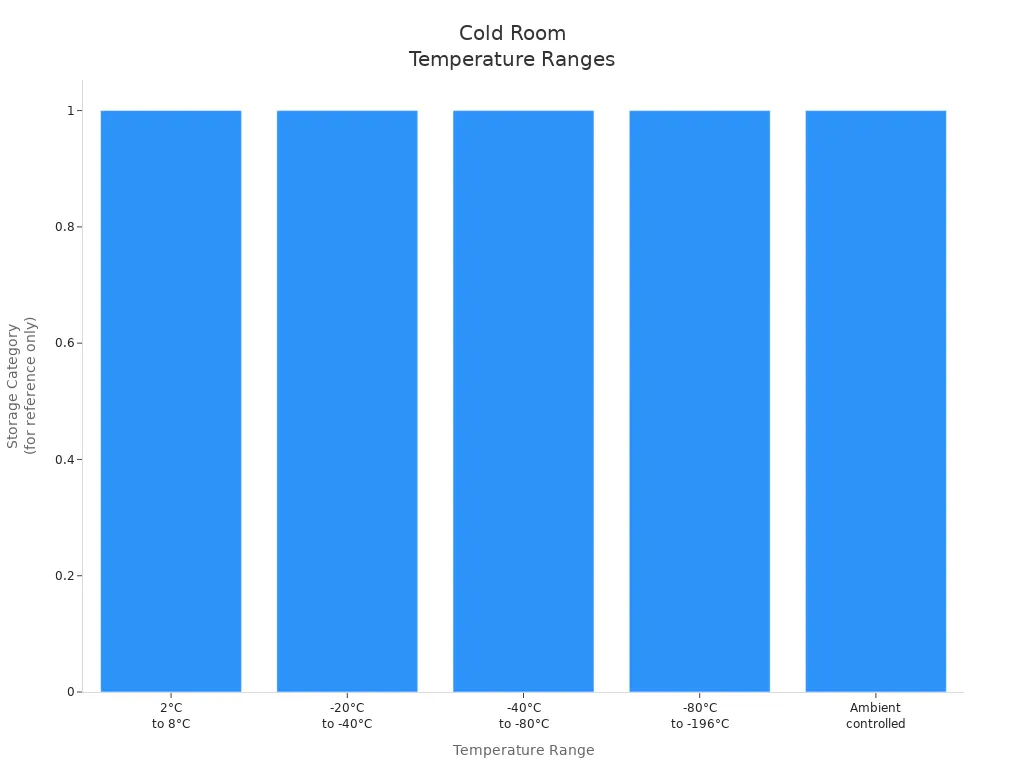
You get many good things from using a cool room for medicines:
You keep medicines working by holding the right temperature.
You stop temperature changes that could hurt products.
You follow safety rules with checks and records.
You keep patients safe by storing products the right way.
You use a cold storage facility for big amounts or special needs.
A cool room helps you feel sure your food, medicines, and chemicals are safe, fresh, and ready to use.
You count on cold rooms to keep things safe and fresh. They help food, medicine, and chemicals last longer. Cold rooms stop things from spoiling too fast. They also let you store items in special ways. Many businesses use cold rooms for different reasons:
Industry | Importance of Cold Rooms |
|---|---|
Food | Keep perishables fresh and safe |
Pharmaceuticals | Protect vaccines and samples |
Chemicals | Safeguard sensitive materials |
Cold rooms use smart tools and save energy. This helps the planet and keeps supplies steady. When you eat fresh food or take safe medicine, thank the cold room that made it possible. 😊
FAQ
What is a controlled environment in a cold room?
A controlled environment keeps temperature and humidity steady. This helps you store food, medicine, and chemicals safely. Cold rooms make these steady conditions to stop spoilage and damage.
Why do you need controlled environments for food storage?
Controlled environments slow down bacteria growth. When you keep food in cold rooms, it stays fresh longer. You also waste less food and save money.
How do controlled environments help with medicine safety?
Controlled environments keep medicine at the right temperature. Cold rooms use sensors and alarms to watch these conditions. This stops medicine from losing power or becoming unsafe.
Can you use controlled environments for other products?
You can use controlled environments for flowers, chemicals, and research samples. Cold rooms let you set the best conditions for each product. This helps you keep items safe and ready to use.
Tip: Check your cold room settings often. Controlled environments work best when you watch them regularly.
Product Type | Why Use Controlled Environments |
|---|---|
Food | Stay fresh, stop spoilage |
Medicine | Stay safe, keep working |
Chemicals | Stop reactions, protect quality |
Flowers | Keep color, last longer |
See Also
The Importance of Cold Rooms for Keeping Products Fresh
Setting Up Cold Rooms for Optimal Fresh Produce Storage
Cold Rooms: Safeguarding Food Against Contamination Risks
Revolutionizing Storage: The Role of Cold Rooms in Industries
Essential Strategies for Maintaining Cold Room Temperature Efficiency
